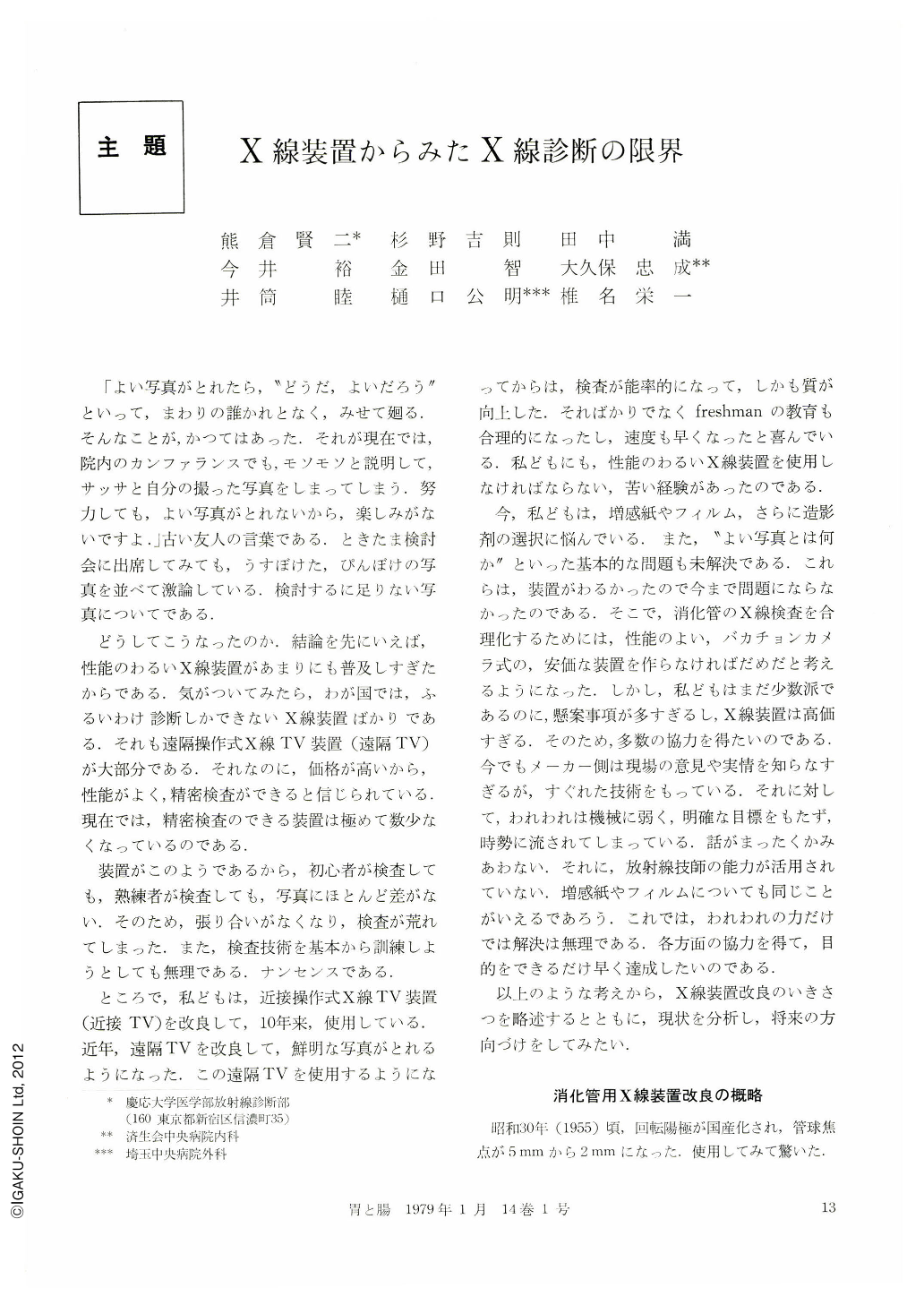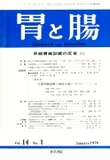Japanese
English
- 有料閲覧
- Abstract 文献概要
- 1ページ目 Look Inside
- サイト内被引用 Cited by
「よい写真がとれたら,“どうだ,よいだろう”といって,まわりの誰かれとなく,みせて廻る.そんなことが,かつてはあった.それが現在では,院内のカンファランスでも,モソモソと説明して,サッサと自分の撮った写真をしまってしまう.努力しても,よい写真がとれないから,楽しみがないですよ.」古い友人の言葉である.ときたま検討会に出席してみても,うすぼけた,びんぼけの写真を並べて激論している.検討するに足りない写真についてである.
どうしてこうなったのか.結論を先にいえば,性能のわるいX線装置があまりにも普及しすぎたからである.気がついてみたら,わが国では,ふるいわけ診断しかできないX線装置ばかりである.それも遠隔操作式X線TV装置(遠隔TV)が大部分である.それなのに,価格が高いから,性能がよく,精密検査ができると信じられている.現在では,精密検査のできる装置は極めて数少なくなっているのである.
The follwing conclusion present our fundamental base of an argument that have resulted from improvements of both conventional R/F tables and remote-controlled X-ray TV apparatus.
The most important factor for GI tract examination with X-ray appratus is the distance between the X-ray film and the target organ. It should be as close as possible. This close contact was easily obtained, in our case, after a divisional radiography shield mounted behind the fluoroscopic table. Such a simple modification couldensure clearer pictures than those made by old-fashioned dark-room type fluoroscopic apparatus.
The development of smaller focus tube comes to the next to better X-ray pictures, if possible, with 0.3 mm focus size. Theoretically, X-ray tubes with the smallest possible beam focus can provide the best picture. In actuality, however, the capacity of 0.3 mm focus tube was too small, and so a realistic size might be 0.8 mm focus.
Recommended is, further, the general use of X-ray apparatus with 3-phase current, which produce a larger X-ray output permitting the extention of the focus-to-table top distance and/or the shortening of the exposure time. With use of such apparatus, pictures became evidently clearer even though the patient was obese.
In addition, an advanced, fluoroscopic X-ray TV apparatus is needed for future development, capable to provide clearer fluoroscopic images and image enlarging. X-ray apparatuses are generally too heavy, and weight reduction continues to be also an important task for improvement.
Furthermore, intensifying screens, films, and automatic film developing devices should be selected in the best conformity with X-ray apparatus. Vigorous study on contrast media is also necessary.
After every problems argued above have been cleared, then, it comes to the key question, that lies ahead of us in future, how much expansion could be achieved in the areas of X-ray diagnosis. The more the apparatuses are improved, the more sophisticated technical skill is required. Remote-controlled TV components shall remain as units for use on routine examinations only, even when various improvement may have been applied. For scruting, the conventional TV fluoroscopy or darkroom fluoroscopy must continue to be used.

Copyright © 1979, Igaku-Shoin Ltd. All rights reserved.


